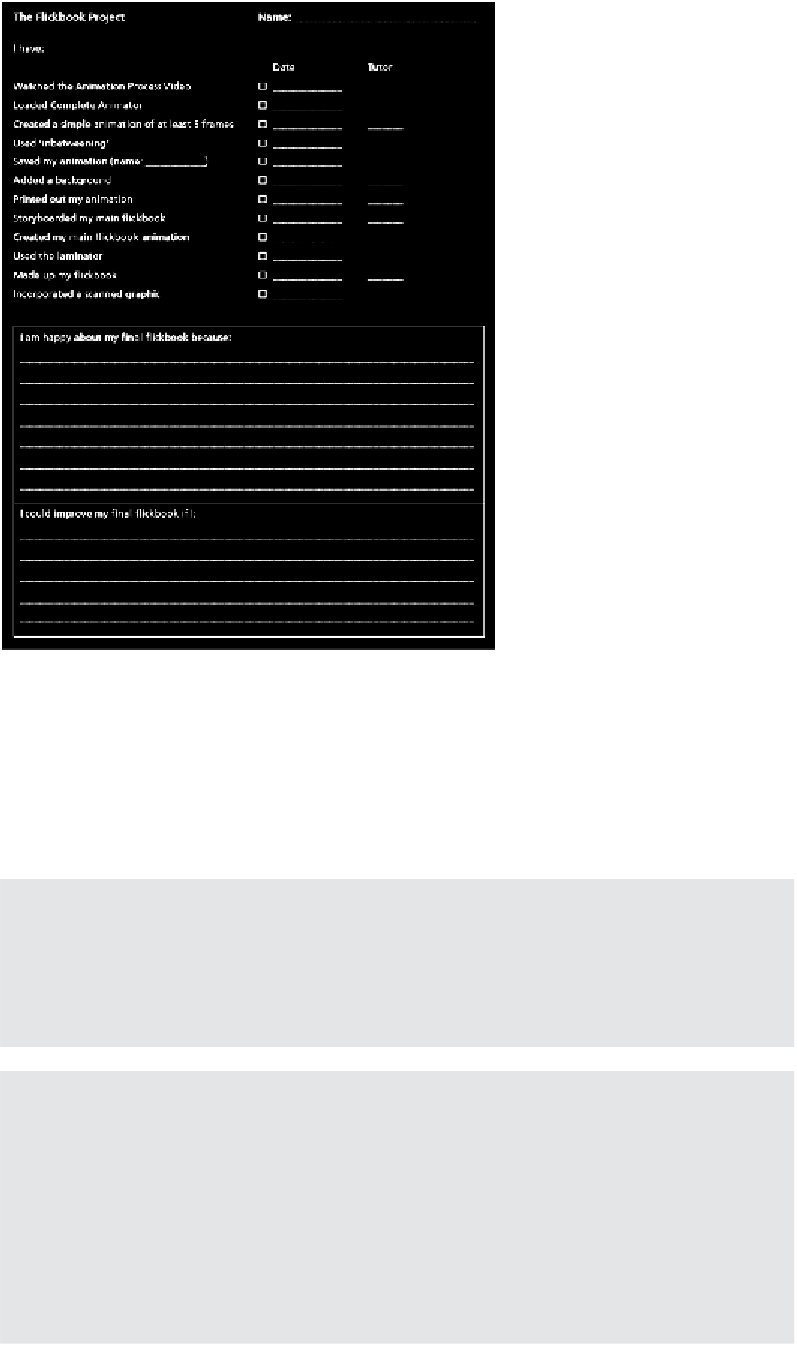Information Technology Reference
In-Depth Information
Straightforward or down-to-earth
Straightforward or down-to-earth
Straightforward or down-to-earth
Straightforward or down-to-earth
Straightforward or down-to-earth
Straightforward or down-to-earth
Straightforward or down-to-earth
Straightforward or down-to-earth
Straightforward or down-to-earth
Straightforward or down-to-earth
Straightforward or down-to-earth
Straightforward or down-to-earth
Figure 4.2
An example of a simple 'I can do' sheet
With work based on existing schemes it will often still be necessary to go back, and
identify and clarify the ideas that are to be covered in a unit and to re-map these
onto teaching sessions. Remember it is the ideas (concepts, knowledge and skills)
that you wish to cover that decide how and what you teach, not just a good idea
for an activity (
see
Chapter 2
on planning).
ADVICE: It is important to remember that it would be unrealistic for you to make
observations of every pupil doing everything, every lesson. Plus, it won't generate
any evidence for moderation purposes (
see
'Moderation' section below for an
explanation of moderation; the
Record Keeping
section below gives ideas for
record keeping).
ADVICE: When assessing students' learning by means of a practical task, it is not
just the task that must be considered. What also matters is
how
the task has
been carried out. How efficient are the techniques used? How much support has
the student been given by the teacher or their peers? Has the support involved
teaching specific techniques, structuring the overall process, or planning and
evaluating? It will not be helpful to give students credit for what you or their
friends have done for them, but it would be unfair not to acknowledge their
learning if they subsequently show the ability to do it for themselves. Assessment
should also take into account the degree of independence shown by each pupil.


Search WWH ::

Custom Search